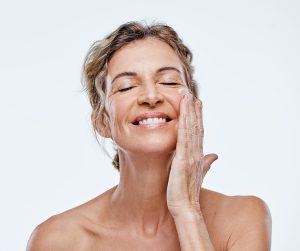
An aging face is the most prominent part of aging. Plenty of things happen to your face as you get older, and the changes aren’t always easily embraced. Some common changes include a larger forehead, hairline recession, longer ears, and a saggy nose.
There are also changes going on beyond stretching surface cartilage. Fat is often redistributed in the face as you get older. When you were young, face fat was evenly distributed in the forehead, temples, cheeks, and areas around the eyes and mouth.
This fat helps your skin look lifted and firm. Age, however, can lead to reduced volume in the fat. It can clump together and shift downwards, causing formerly round, smooth, and tight parts of the face to sag.
Age can also bring fat to new parts of your face. You may notice things getting a little baggy around the chin or jowly in the neck.
You may also notice the appearance of wrinkles. Deep wrinkles on your forehead are generally the result of continual tugging on the facial muscles just beneath the skin. The “expression” lines are creases caused from use.
Other wrinkles result from fat redistribution, sun exposure, smoking, or natural skin degeneration.
So, what can you do to slow the aging process? Some non-surgical options are:
Sun Protection: Sunscreen is one of the best and most affordable tools you can use to slow the skin aging process. Both UVA and UVB rays can damage skin cells and contribute to spots and wrinkling, so apply it before each outing, summer or winter.
Creams and Lotions: Moisturizers can plump up dry skin and temporarily relieve the appearance of wrinkles. Exfoliant creams can help clear away dead skin that doesn’t fall away as quickly as when you were younger.
Certain prescription creams feature retinoids, compounds related to vitamin A, which may reduce wrinkles and spots.
Diet: A healthy diet rich in fruit, vegetables, and “good” fats can support skin cells.